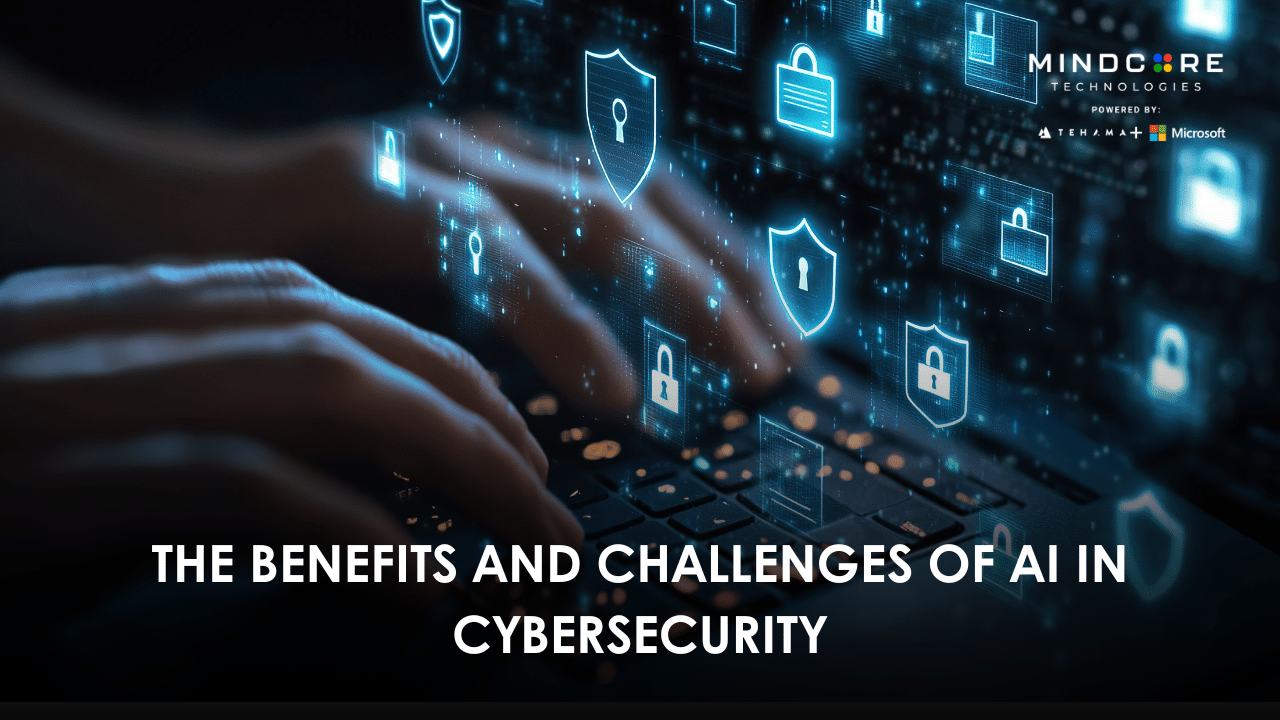Cyber threats are getting smarter and faster by every day. The traditional methods of security are facing an uphill challenge against these new-age threats. For that reason, many businesses are now opting into AI to bolster their cybersecurity. It provides speed, precision, flexibility, and accuracy-even though the disadvantages are legit.
This blog will discuss the advantages and risks of AI in cybersecurity. You will see why AI is important, where it shines, and what businesses need to be careful about.
The Major Benefits of AI in Cybersecurity
AI offers several clear benefits when used in cybersecurity.
- Speed and Efficiency: AI can detect and respond to threats in real-time. Unlike human teams, AI can analyze huge amounts of data in seconds. This fast reaction helps stop attacks before they spread.
- Scalability: AI systems can protect thousands of devices and networks at once. No matter the size or type of your organization, AI adapts to your specific needs.
- Continuous Learning and Adaptation: AI improves over time. As it encounters new threats, it learns and adapts. This makes it better at detecting future attacks.
- Reducing Human Error: Cybersecurity involves many repetitive tasks. AI can handle these with precision, lowering the chances of mistakes.
- Predictive Capabilities: AI can forecast potential attacks by analyzing patterns. This proactive approach allows businesses to prepare in advance.
These advantages are why many companies are investing in AI cybersecurity solutions to protect their digital assets.
Business Impact: How AI Strengthens Cybersecurity Operations
The benefits of AI directly improve business operations. With quicker threat detection, incidents get quickly resolved, thus minimizing downtime and damage. AI lessens the workload of cybersecurity teams. By automating some routine tasks, human experts get a chance to work on more complicated problems.
Better accuracy in threat detection results in less costly breaches and helps maintain customers’ trust. For instance, a threat detection solution powered by AI enabled the company to respond in minutes rather than hours. This is the expected level of efficiency in the area of cyber defense today. Being armed with AI cybersecurity tools has become indispensable for companies wishing to fight evolving threats.
The Challenges and Limitations of AI in Cybersecurity
Despite its strengths, AI is not perfect. Several challenges need attention.
- False Positives and False Negatives: AI systems could sometimes be mistaken. Sometimes they could generate false alarms by flagging harmless activities as threats. At other times, they might miss real attacks.
- Need for Quality Data: AI learns from data. So, if flawed or outdated data is employed for training, the AI suffers from the resultant performance.
- Difficulties and High Costs: Costs could be high with the implementation of any AI-based cybersecurity solution, including integration with existing systems.
- Over-Reliance and Blind Trust: On the contrary, some businesses have been guilty of over-reliance on AI with no human oversight. This can, however, prove to be risky when faced with new or complex attacks.
- Ethical and Privacy Concerns: AIs are very frequently required to analyze sensitive data. In many cases, calls are made to consider whether the companies respect non-violation of privacy legislation and adhere to ethical considerations.
These challenges are common in AI cybersecurity adoption and need careful management.
Security Risks Introduced by AI in Cybersecurity
AI is not only used by defenders. Attackers also use AI to create smarter threats.
In recent times, cybercriminals use AI to generate lifelike phishing emails. The emails are so tricky to detect as they resemble actual correspondence. Deepfake technology is another tool at the disposal of the attackers: fake videos or audio recordings can be produced. This technology can be employed for scams or for ruining someone. Another is AI-powered malware creation, wherein hackers aim to create newer variants of malware, which escape conventional defenses, thanks to AI.
The businesses need to stay up-to-date with these AI-powered attacks. Defensive AI systems should raise against these advanced threats. This growing risk makes an AI cybersecurity tool more relevant in a modern-defense system.
Striking the Balance: AI as an Assistant, Not a Replacement
While AI is a powerful tool, it should not replace human cybersecurity experts. The best results come from combining AI’s speed with human judgment.
AI handles data analysis and automates routine tasks. Humans give context to events, make difficult choices, and handle ethical considerations. Intending to detect a suspicious login attempt is an example of AI, but identifying whether it is truly malicious or a false alarm can best be done by a human analyst. Businesses should be taught to train their teams for working with AI. An AI cybersecurity certification ensures that some of the advanced tooling is understandable to the workforce and can be managed by them.
Future Outlook: Evolving Benefits and Emerging Challenges
The contribution of AI to cybersecurity is likely to continue to grow over time. Future trends include:
- Explainable AI: AI systems become transparent to such an extent that the security engineer will be able to understand why AI took some decisions.
- Quantum-Resistant Security: AI-enabled defenses against emerging quantum computing threats.
- Adaptive AI Models: These are models that learn quickly and respond well to new attack methods.
The companies leading the frontier of AI cybersecurity are already investing in these innovations. Staying updated is a must for companies wanting to remain secure.
Best Practices for Adopting AI in Cybersecurity
To maximize benefits and minimize risks, businesses should follow these best practices:
Step 1: Self-Assessment of Cybersecurity Needs
Begin with a thoughtful assessment of the current security stance. Think of scenarios where AI can deliver more fast-acting threat detection and swift response, and/or better data protection.
Step 2: Select Scalable and Flexible AI Solutions
Choose your AI cybersecurity solution with consideration of the future growth of your company. It must be flexible enough to adjust to the requirements in terms of your industry and the scale of the organization.
Step 3: Go for Explainability and Transparency
Select AI systems that can give clear, understandable insights. Your team must have a full understanding of these processes and know why particular actions were taken, mainly in life-threatening or critical security incidents.
Step 4: Keep Continuous Human-AI Collaboration
Keep your cybersecurity AI solutions actively supporting the human teams. Maintain a regular review schedule for the AI’s decisions, integrate human expert opinion into the decision-making process, and ensure good balance in the workflow.
Step 5: Audit Regularly and Review for Ethics
Maintain a schedule for auditing in the checking of AI accuracy and adherence to ethical standards. This will ensure reliability and privacy regulations maintenance for your AI systems.
Upon following these steps and careful execution, AI will be smoothly and successfully incorporated into your cybersecurity strategy.
Conclusion
AI makes many contributions to cybersecurity, going from faster detection to smarter responses. On the other hand, it brings upon some challenges that companies must address.
By weighing both sides, companies can make informed decisions. AI combined with human expertise makes the strongest defense against any evolving cyber threat. The adoption of AI in cybersecurity is not only about technology; it is about the responsible use with which to defend your business that is increasingly going digital.


